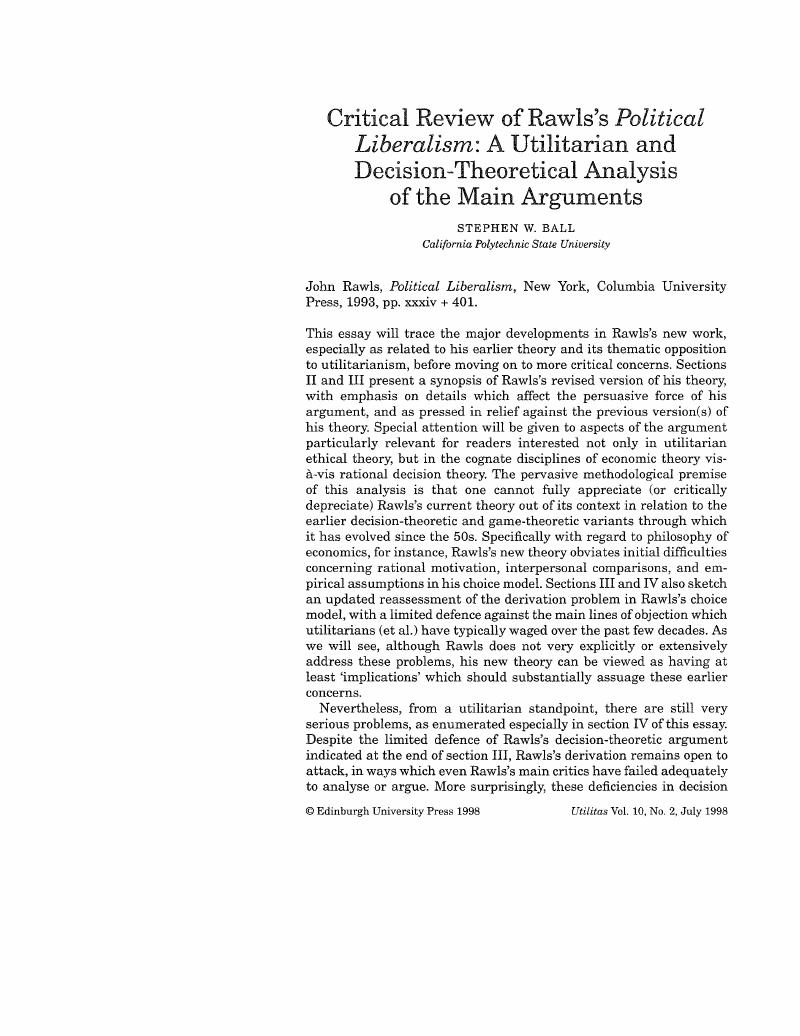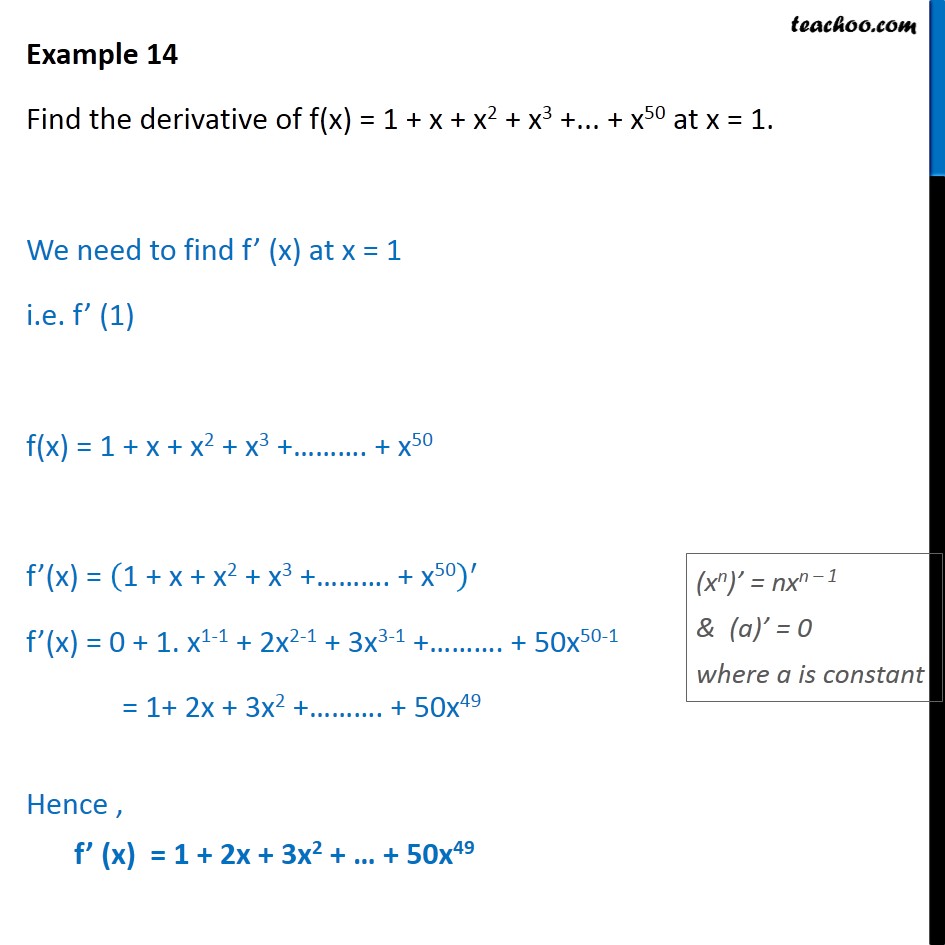Compute answers using Wolfram's breakthrough technology & knowledgebase, relied on by millions of students & professionals For math, science, nutrition, historyClick here👆to get an answer to your question ️ If f(x) = 3x 5 , then f^1 (x)Oct 03, 16 · Is the difference from f(x1) and f(x1) 5 and 5?

Enabling Green Computing In Cloud Environments Network Virtualization Approach Toward 5g Support Verma 18 Transactions On Emerging Telecommunications Technologies Wiley Online Library
F(x)=(x-1)(x-2)(x-3)...(x-50) then f'(1)/168f'(3)
F(x)=(x-1)(x-2)(x-3)...(x-50) then f'(1)/168f'(3)-Compute answers using Wolfram's breakthrough technology & knowledgebase, relied on by millions of students & professionals For math, science, nutrition, historySimple and best practice solution for f(x)=x^3(2x^21) equation Check how easy it is, and learn it for the future Our solution is simple, and easy to understand, so don`t hesitate to use it as a solution of your homework




Tunable Microcellular And Nanocellular Morphologies Of Poly Vinylidene Fluoride Foams Via Crystal Polymorphism Control Leung 19 Polymer Crystallization Wiley Online Library
F (x) = (x1) (x2) (x3) , x ∈ 0,4, ∴ f (x) = x 3 6x 2 11x 6 As f (x) is a polynomial in x (1) f (x) is continuous on 0, 4 (2) f (x) is differentiable on (0, 4) Thus, all the conditions of LMVT are satisfied To verify LMVT we have to find c ∈ (0,4) such thatGraph f (x)=1/3x^2 f (x) = 1 3 x2 f ( x) = 1 3 x 2 Find the properties of the given parabola Tap for more steps Rewrite the equation in vertex form Tap for more steps Combine 1 3 1 3 and x 2 x 2 y = x 2 3 y = x 2 3 Complete the square for x 2 3 x 2 3Generally, to differentiate a product function, the formula is as follows f(x) = g(x) * h(x) Where the derivative is f'(x) = g'(x)*h(x) h'(x)*g(x) In your example, this follows the general formula of product rule however, there is one extra term To make up for this, we have to alter the general formula slightly You now have to compensate for the third term
Graph f(x)=2(x3)^21 Find the properties of the given parabola Tap for more steps Use the vertex form, , to determine the values of , , and Since the value of is positive, the parabola opens up Opens Up Find the vertex Find , the distance from the vertex to the focus Tap for more stepsIf x=0 then f(x)=f(0)=1 Also, (x)*f(x)f((x))=2*(x)^2(x)1 That is x*f(x)f(x)=2*x^2x1;To ask Unlimited Maths doubts download Doubtnut from https//googl/9WZjCW If` 2f(x)3f(1/x)=x^21` then `f(x)` is
Click here👆to get an answer to your question ️ Find the derivative of f(x) = 1 x x^2 x^3 x^50 at x = 1Feb 11, 14 · f(x) = {(3x)/(1x)} 23x taking log on both sides log(fx) = (2 3x) log {(3x)/(1x)} log(fx) = (2 3x) log(3x) log(1x) Now differentiate f'(x) /f(x) = (2The functional notation simply means that you replace in the function with whatever values are in the domain So means that the solution set will contain the answer for every value of In the question, So you set the function equal to , then solve for Add to both sides Divide both sides by Add to both sides




Amazon Com Fuel Valve Petcock For Honda Cl175 Cb350 Cl350 Sl350 Cb360 Cl360 Cb450 Cl450 292 000 16mm X 1 5mm Automotive




Kuhn Thomas Black Body Theory The Quantum Discontinuity Chicago 1978 Quantum Mechanics Thermodynamic Equilibrium
Let f (x) = a 5 x 5 a 4 x 4 a 3 x 3 a 2 x 2 a 1 x 1, $ $ w h e r e a_{i}'s a r e r e a l a n d f (x) = 0 h a s a p o s i t i v e r o o t \alpha _{0}$$ then Hard View solutionDivide \frac {f1} {f}, the coefficient of the x term, by 2 to get \frac {1} {2}\frac {1} {2f} Then add the square of \frac {1} {2}\frac {1} {2f} to both sides of the equation This step makes the left hand side of the equation a perfect square Square \frac {1} {2}\frac {1} {2f}So f (x) = 1 − x 3 − x 5 f ′ (x) = − 3 x 2 If x increases from 287 to 5, then which of the following decreases ?




Amazon Com Tfcfl Electric Start Kit Starter Motor Flywheel Fit For Gx160 5 5hp Gx0 6 5hp Garden Outdoor




Document
View solution View more Learn with content Watch learning videos, swipe through stories, and browse through conceptsWe calculate terms in parentheses ((F^21F3F3)), so (F^21F3F3) We get rid of parentheses F^21F3F3 We add all the numbers together, and all the variables F^22F3 Back to the equation (F^22F3)Weekly Subscription $199 USD per week until cancelled Monthly Subscription $699 USD per month until cancelled Annual Subscription $2999 USD per year until cancelled




Pack Of 4 Pony 50 Pipe Clamp Fixture For 3 4 Inch Black Pipe Rough Plumbing Tools Home Improvement Ilsr Org




Amazon Com Lifan Lf168f 2bq 6 5 Hp 196cc 4 Stroke Ohv Industrial Grade Gas Engine With Recoil Start And Universal Mounting Pattern Garden Outdoor
Nov 17, 15 · Hey there!Jun 24, 21 · If f (x)=3x−5 for all x, then what is the value of x?We are told that mathf(x^2 1) = x^4 5x^2 3/math Using the substitution mathu = x^2 1/math, we thus have mathf(u) = x^4 (2 3)x^2 (1 3 1




Experimental And Numerical Simulation Research On The Inner Secondary Air Ratio In A 600 Mwe Down Fired Boiler Song 19 International Journal Of Energy Research Wiley Online Library



T L Irt Ro I Rl A Tt A Rx X Th Ri A A 1 Rl I I I5 Compre Hens Tve Cararoeue Pdf Free Download
May 03, · 2 By plugging in x = − 1, we find f( − 1) = − 5 2 With g(x) = f(x − 1) − x 5 2 (or f(x) = g(x 1) x − 3 2 ), we have 3 (g(2x 2) 2x − 1 2) = g(x 1) 6x − 3 2 or after substituting x ← x − 1 and simplifying, 3g(2x) = g(x) Then with h(x) = g(2x), we find 3h(x 1) = h(x) Assume for some a, b ∈ R with b ≥ aApr 07, 12 · The value of f'(1) has to be determined given that f(x) x^(2)(f(x))^3 = 10 and f(1) = 2 f(x) x^(2)(f(x))^3= 10 Differentiating with respect to x givesIn an example, we wish to find the value of the function f(x)=x when x=2, thus we are finding f(2) Answer and Explanation 1 Become a Studycom member to unlock this answer!




Critical Review Of Rawls S Political Liberalism A Utilitarian And Decision Theoretical Analysis Of The Main Arguments Utilitas Cambridge Core




If F X 1 X X 2 X 3 X 99 X 100 Then F Prime 1 Equa
It has been provided or mentioned that a function F(x1)=x^2–3x2 Interestingly, if we substitute a value of x1 in the place of x, we obtain, F((x1)1)=F(x) Therefore, F(x)=(x1)^2–3(x1)2=x^2–2x1–3x32=x^2–5x6 Hence, the function F(x) canCalculus Find the Derivative f (x)=1/x f (x) = 1 x f ( x) = 1 x Rewrite 1 x 1 x as x−1 x 1 d dx x−1 d d x x 1 Differentiate using the Power Rule which states that d dx xn d d x x n is nxn−1 n x n 1 where n = −1 n = 1 −x−2 x 2 Rewrite the expression using the negative exponent rule b−n = 1 bn b n = 1 b nJan 28, · Ex 12, 10 Let A = R − {3} and B = R − {1} Consider the function f A → B defined by f (x) = ((x − 2)/(x − 3)) Is f oneone and onto?




Spare Replacement Parts Cancanle Spark Plug Ignition Cap Boot For Honda Gx100 Gx1 Gx160 Gx0 5 5hp 6 5hp 168f Small Engine Water Pump Motor Generator Patio Lawn Garden




Conceps In Clinical Pharmacokinetics Pdf Pharmacokinetics Pharmacology
Simple and best practice solution for f(x)=x^23x10 equation Check how easy it is, and learn it for the future Our solution is simple, and easy to understand, soSolve your math problems using our free math solver with stepbystep solutions Our math solver supports basic math, prealgebra, algebra, trigonometry, calculus and more(1) f (x)=2^2 Using stmt 1,We can derive 3x5=4 x = 3 So stmt 1 alone is sufficient to get value of x (2) f (x^2)=22




A Comprehensive Overview Of Directing Groups Applied In Metal Catalysed C H Functionalisation Chemistry Abstract Europe Pmc




Hshisjf2nopwbm
Compute answers using Wolfram's breakthrough technology & knowledgebase, relied on by millions of students & professionals For math, science, nutrition, historyJun 07, 18 · Now let's evaluate #f'(x)#, when #x=1#, knowing that the result #f'(1)# is equal to #1#, as stated in the problem #f'(1) = 2*14*(1)k = 2k# #2k=1# #k=3# So, the exact equation for the first derivative is #f'(x)= 2x^2 4x 3# We repeat the process to obtain an equation to the original function #f(x)=2/3x^32x^23xk#Graph f(x)=(1/3)x Rewrite the function as an equation Rewrite in slopeintercept form Tap for more steps The slopeintercept form is , where is the slope and is the yintercept Reorder terms Use the slopeintercept form to find the slope and yintercept Tap for more steps




A Comprehensive Overview Of Directing Groups Applied In Metal Catalysed C H Functionalisation Chemistry Abstract Europe Pmc




A Comprehensive Overview Of Directing Groups Applied In Metal Catalysed C H Functionalisation Chemistry Abstract Europe Pmc
Compute answers using Wolfram's breakthrough technology & knowledgebase, relied on by millions of students & professionals For math, science, nutrition, historyStack Exchange network consists of 177 Q&A communities including Stack Overflow, the largest, most trusted online community for developers to learn, share their knowledge, and build their careers Visit Stack ExchangeOct 17, · 4 Answers4 Active Oldest Votes 3 OK, let's use the hint Let u = x 1 Then f ( x 1) = f ( u) = x 2 − 5 x 3 = ( u − 1) 2 − 5 ( u − 1) 3 = u 2 − 7 u 9 So we just got that f ( u) = u 2 − 7 u 9 But the variable name doesn't matter (it can be u, x




Document




Enabling Green Computing In Cloud Environments Network Virtualization Approach Toward 5g Support Verma 18 Transactions On Emerging Telecommunications Technologies Wiley Online Library
Answer to True or False?Assuming =x²/3 then f'=2x/3 so f'(8)=16/3 Suggest you practice your course material a bit more so you can do these easily Remember, if y=x^n then y'=nx^(n1) Eg x^(1/2) becomes (1/2)x^(1/2)If a polynomial be equal to zero for x=a then, (xa) is a factor of it We call "a" as a zero of the polynomial Now,According to Rational root theorem,possible




Carbon Dots For Photocatalytic Degradation Of Aqueous Pollutants Recent Advancements Akbar Advanced Optical Materials Wiley Online Library
.jpg?x-oss-process=image/auto-orient,1/quality,q_70/format,webp)



Buy Replacement Petrol Engine 3 4 Amp Quot Shaft 5 5hp Compatible For Honda Gx160 4 Stroke And Other Auto Parts On Maxpeedingrods
Algebra Find the Inverse Function f (x)=1/2x3 f (x) = 1 2 x − 3 f ( x) = 1 2 x 3 Replace f (x) f ( x) with y y y = 1 2x− 3 y = 1 2 x 3 Interchange the variables x = 1 2y− 3 x = 1 2 y 3 Solve for y y Tap for more stepsNov 23, 16 · Therefore f −1(x) = 1 x1 3 The verification is f (f −1(x)) = x Let's do this f (f −1(x)) = f ( 1 x1 3) = 1 ( 1 x1 3)3 = 1 1 x = x Answer linkIf f(x) = (1x)(1x^2)(1x^3)(1x^4), then f'(0) = 1 By signing up, you'll get thousands of stepbystep solutions to




Document




Woa2 Variant Alpha Amylases From Bacillus Subtilis And Methods Of Use Thereof Google Patents
Well depends If f(x)=x²/3 or x^(2/3)?Simple and best practice solution for f(x1)=2x3 equation Check how easy it is, and learn it for the future Our solution is simple, and easy to understand,Simple and best practice solution for F(x)=x^23x1 equation Check how easy it is, and learn it for the future Our solution is simple, and easy to understand, so don`t hesitate to use it as a solution of your homework If it's not what You are looking for type in the equation solver your own equation and let us solve it




Pdf Mathematical Methods For Economic Analysis




Experimental Performance Of A Full Scale Spatial Rc Frame With Buckling Restrained Braces Subjected To Bidirectional Loading Journal Of Structural Engineering Vol 147 No 3
Our output would be ( x − 2) 2 − 3 ( x − 2) 1 Every x in the function corresponds to the input value Therefore we can write our function like this f ( x − 2) = ( x − 2) 2 − 3 ( x − 2) 1 In general, if you have f ( x) and you want to find f ( m) just replace all the x with mAbout Press Copyright Contact us Creators Advertise Developers Terms Privacy Policy & Safety How works Test new features Press Copyright Contact us CreatorsShort Solution Steps f ( x ) = x ^ { 3 } ( 1 \frac { 4 } { x 6 } ) f ( x) = x 3 ( 1 − x 6 4 ) To add or subtract expressions, expand them to make their denominators the same Multiply 1 times \frac {x6} {x6} To add or subtract expressions, expand them to make their denominators the same




Document




Tunable Microcellular And Nanocellular Morphologies Of Poly Vinylidene Fluoride Foams Via Crystal Polymorphism Control Leung 19 Polymer Crystallization Wiley Online Library
$\endgroup$ – Francisco Velasco Oct 3 '16 at 008 $\begingroup$ The premise holds for $\forall x$ I posted a separate answer to hopefully eliminate any confusion about variable namesSep 25, 16 · Explanation As f (x) = 3x − 1 f (x −1) = 3(x − 1) − 1 = 3x −3 −1 = 3x − 4 and f (2) = 3 ×2 −1 = 6 −1 = 5 Hence f (x −1) −f (2) = 3x − 4 − 5 = 3x −9Solve your math problems using our free math solver with stepbystep solutions Our math solver supports basic math, prealgebra, algebra, trigonometry, calculus and more




If F X X 1 X 1 Then F 2x Is Equal To



T L Irt Ro I Rl A Tt A Rx X Th Ri A A 1 Rl I I I5 Compre Hens Tve Cararoeue Pdf Free Download
Feb 04, 19 · Differentiate( x^5 5x 8) x^37x9)in three ways mentioned below asked Jan 18, 18 in Mathematics by sforrest072 ( 128k points) continuity and differntiabilityDivide f2, the coefficient of the x term, by 2 to get \frac{f}{2}1 Then add the square of \frac{f}{2}1 to both sides of the equation This step makes the left hand side ofTherefore x*(f(x)f(x))f(x)f(x)=4*x^22 (a) And x*(f(x)f(x




Anaerobic Benzene Biodegradation Linked To Growth Of Highly Specific Bacterial Clades Biorxiv




Rnf168 Ubiquitinates K13 15 On H2a H2ax To Drive Dna Damage Signaling Cell




A Comprehensive Overview Of Directing Groups Applied In Metal Catalysed C H Functionalisation Chemistry Abstract Europe Pmc




If F X 1 X X 2 X 3 X 99 X 100 Then F Prime 1 Equa




A Comprehensive Overview Of Directing Groups Applied In Metal Catalysed C H Functionalisation Chemistry Abstract Europe Pmc




Example 14 Find Derivative Of F X 1 X X2 X3 X50




If F 1 1 F 1 3 Then The Value Of Derivative Of F F F X




Epb1 Production Of Nucleic Acid Google Patents




A Comprehensive Overview Of Directing Groups Applied In Metal Catalysed C H Functionalisation Chemistry Abstract Europe Pmc




Find The Derivative Of F X 1 X X 2 X 3 Dotdotdot X 50 At X




Find The Derivative Of F X 1 X X 2 X 3 X 50 At X 1




Duromax Xp7hpe 8cc 3 4 Shaft Recoil Electric Start Engine Duromax Power Equipment




Loncin 196cc 6 5hp Horizontal Shaft Gas Engine G0fa




Bruce The Canon Of Scripture




Document




Elementsofstatic00loneuoft 3 By Ybalja Issuu




Environmental Data Analysis With Matlab Pages 251 287 Flip Pdf Download Fliphtml5




Pdf The Human 18s Rrna M6a Methyltransferase Mettl5 Is Stabilized By Trmt112




Kepler 186f Wikipedia




Example 14 Find Derivative Of F X 1 X X2 X3 X50




Engineering Of A Single Conserved Amino Acid Residue Of Herpes Simplex Virus Type 1 Thymidine Kinase Allows A Predominant Shift From Pyrimidine To Purine Nucleoside Phosphorylation Journal Of Biological Chemistry



T L Irt Ro I Rl A Tt A Rx X Th Ri A A 1 Rl I I I5 Compre Hens Tve Cararoeue Pdf Free Download



0 件のコメント:
コメントを投稿